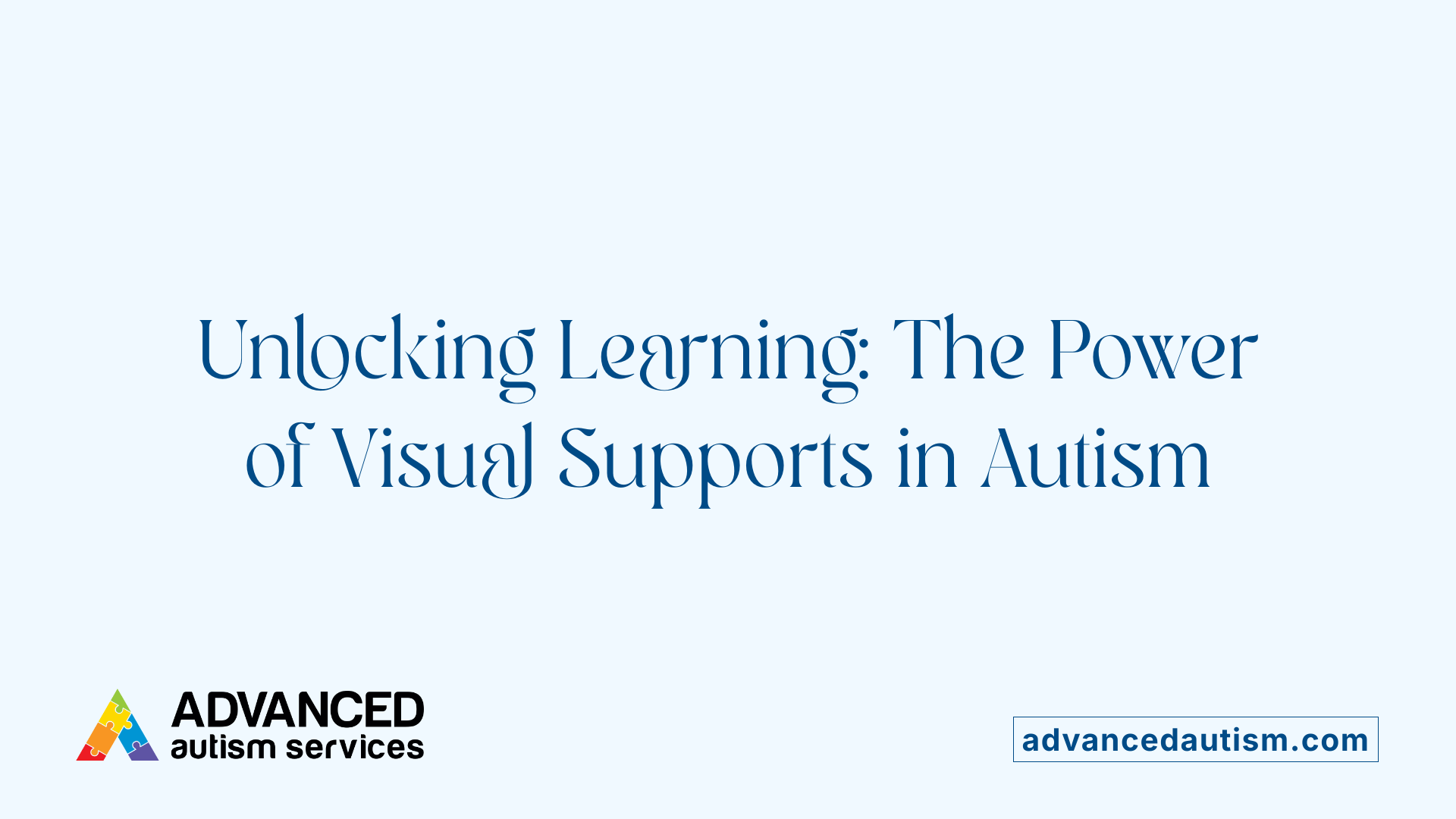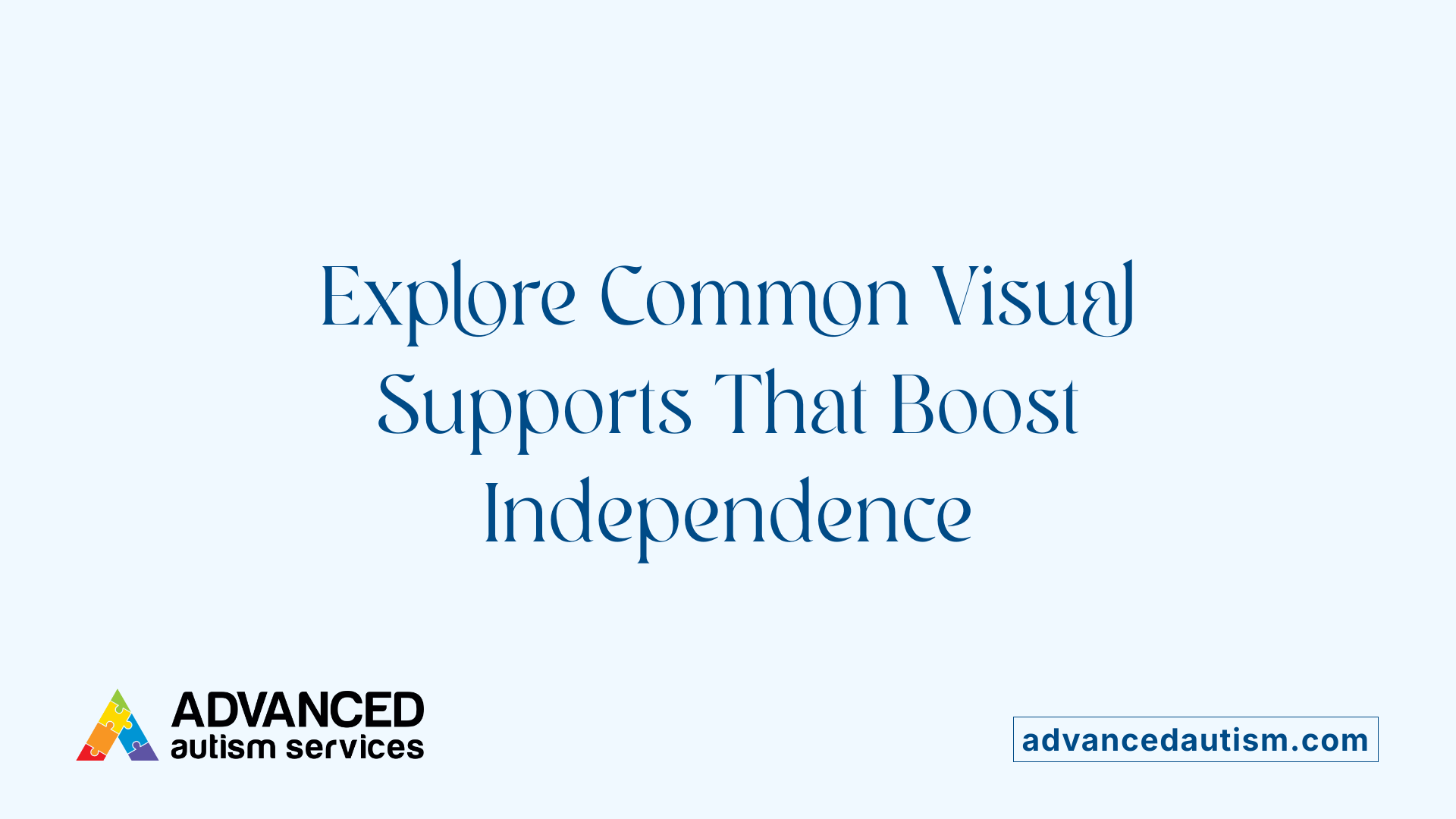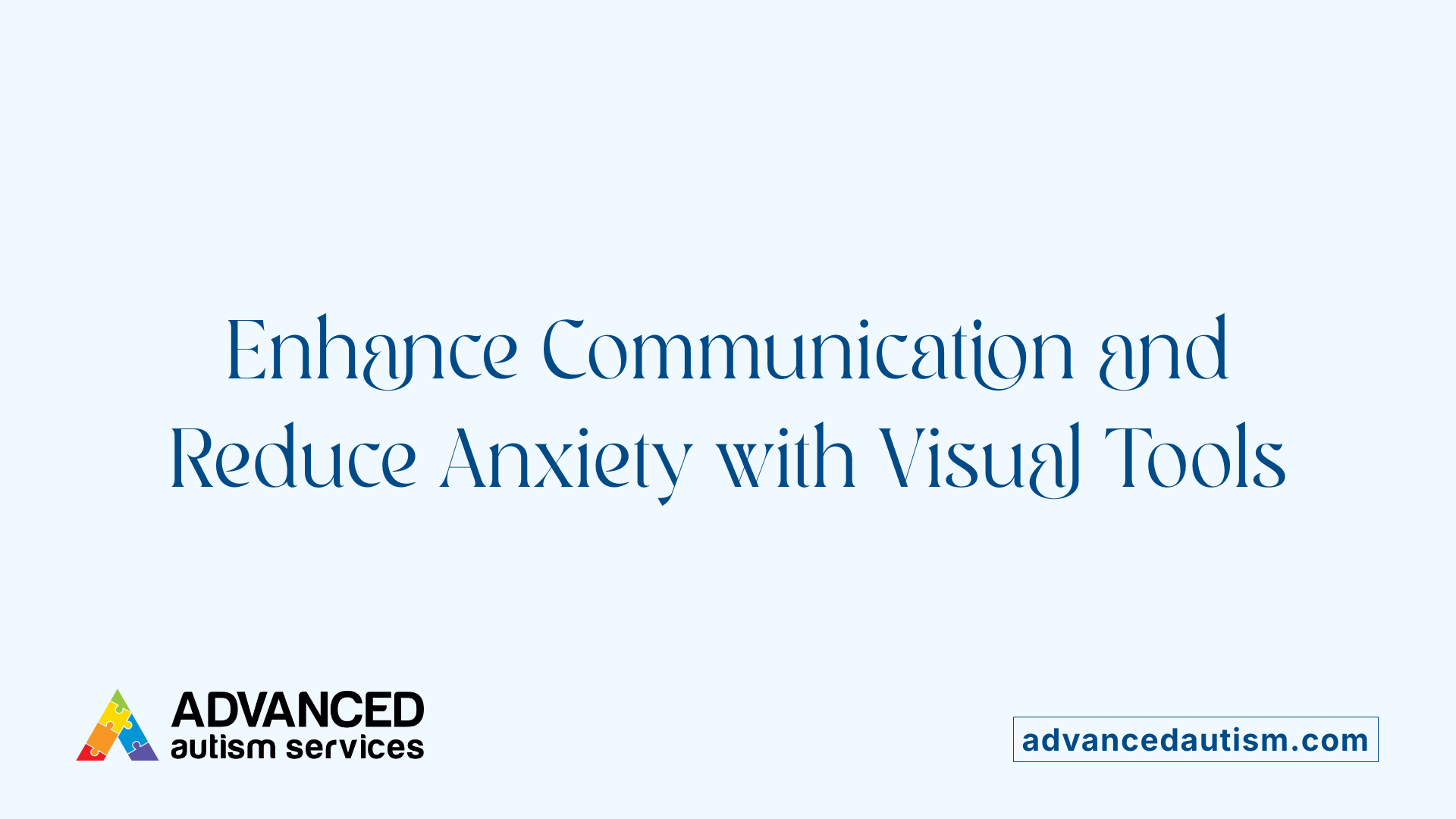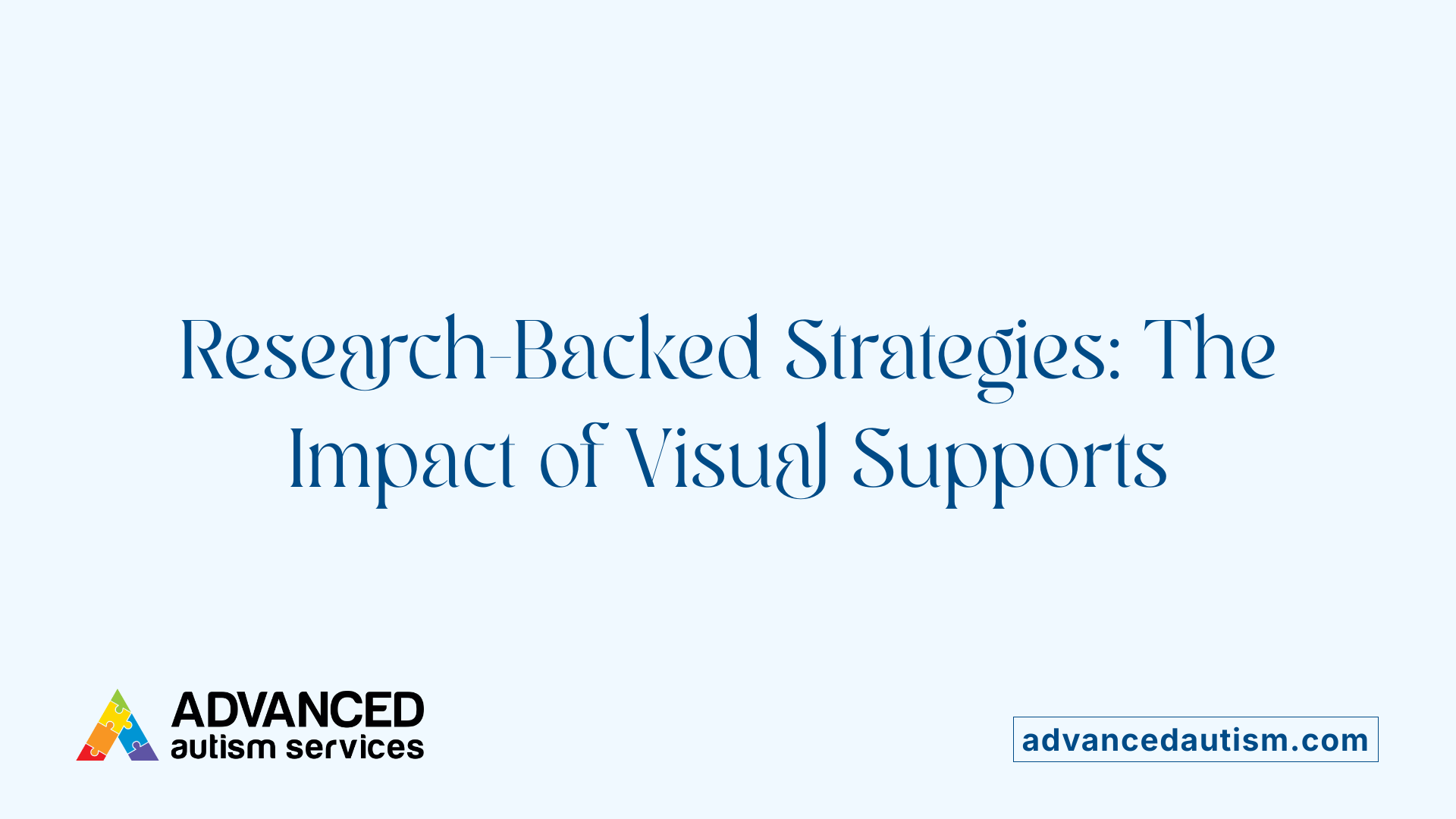The Role of Visual Supports in Enhancing Learning for Autism
Unlocking Potential: How Visual Supports Transform Autism Education
Understanding the Power of Visual Tools in Autism Learning
Visual supports are essential tools that leverage the visual processing strengths of children with autism to enhance their understanding, communication, and independence. This article explores the multifaceted role of visual supports, examining their types, benefits, empirical evidence, and practical strategies for implementation in educational settings.
What Are Visual Supports and Why Are They Important?

What are visual supports, and why are they important in enhancing learning and communication for children with autism?
Visual supports are tools like pictures, symbols, objects, written words, and charts that help children with autism better understand their environment and communicate more effectively. These supports come in various forms, including visual schedules, choice boards, visual cues, and social stories.
Children with autism often process visual information more effectively than spoken language. By using visual supports, they can interpret routines, anticipate upcoming activities, and express their needs more clearly. For example, a picture schedule can show a child what to expect during the day, reducing confusion and anxiety.
These tools foster independence by enabling children to complete tasks, follow routines, and make choices with less frustration. They are especially useful during transitions, such as moving from playtime to mealtime, or when navigating new environments.
Research highlights the benefits of visual supports, noting that they help decrease challenging behaviors, improve social interactions, and support understanding in natural settings like home, school, and community environments. Consistent use and customization to each child's interests and abilities are vital for maximizing their effectiveness.
Incorporating visual supports into daily routines creates a structured, predictable environment that promotes confidence and engagement among children with autism. Overall, they are a valuable resource that enhances learning, communication, and independence.
Types of Visual Supports and Their Practical Applications

What are some common types of visual supports used in educational settings for children with autism?
Children with autism often benefit greatly from various visual supports that help organize their environment, communicate effectively, and navigate daily routines. Common tools include picture schedules and mini-schedules, which clearly outline the sequence of activities. These visual schedules reduce anxiety by providing predictability and helping children understand what comes next.
Visual timers and countdown clocks serve to make the passage of time more understandable. For example, a child might see a visual timer indicating how long they need to stay engaged in an activity or wait for a transition, which can help promote patience and independence.
Choice boards present a set of options visually, enabling children to express preferences or make decisions easily. These are especially useful in teaching decision-making and promoting autonomy.
Social stories and emotion charts are designed to teach social skills and emotional recognition. Social stories describe social situations with pictures and words, guiding children on how to behave or respond appropriately. Emotion charts help children identify and communicate their feelings, fostering emotional awareness.
In addition to these, visual cues such as labeled objects, visual prompts for routines like hand-washing or toileting, and communication aids like the PECS system enhance overall communication and understanding.
Visual supports can be created using photographs, drawings, line symbols, or real objects. They are most effective when regularly used and tailored to each child’s individual needs. Consistent utilization in different settings — home, school, and community — reinforces learning and helps children become more independent in daily activities.
These visual tools are versatile, allowing educators and parents to customize supports to a child's age, skill level, and interests. By incorporating such supports, the goal is to facilitate clearer understanding, reduce frustration, and build skills for social interaction, independence, and communication.
Benefits of Visual Supports in Autism Education

What are the benefits of using visual supports for children with autism?
Visual supports play a crucial role in helping children with autism better navigate their daily lives. These tools, which include objects, photographs, drawings, written words, and multimedia, provide tangible ways to interpret their environment, communicate effectively, and develop essential skills.
One of the primary advantages is the reduction of anxiety. Predictable routines and clear expectations, conveyed through visual schedules, calendars, and task analyses, make transitions less stressful. For example, visual timetable cards help children anticipate upcoming activities, which encourages independence and confidence in managing daily routines.
Improved understanding of language and social cues is another significant benefit. Visual scripts and social stories guide children through social situations and expected behaviors, enhancing their social skills and responses. This visual approach often complements verbal communication, especially for children who have difficulty processing spoken language.
Visual supports also foster greater independence. Tools like choice boards empower children to make decisions, such as selecting activities or snacks. Rule reminder cards visually communicate behavioral expectations, reducing challenging behaviors and increasing self-regulation.
Behavior management becomes more effective with visual cues that clarify routines and reinforce rules. Visual supports can break down complex tasks into smaller, manageable steps via visual task analyses, helping children become more autonomous in activities like hand-washing and toileting.
Furthermore, visual supports can be easily customized to suit individual needs, interests, and developmental levels. For example, PECS (Picture Exchange Communication System) aids children with limited verbal skills in expressing their needs, while feelings and emotions charts help them identify and communicate their emotional states.
Those working in natural environments, such as homes, schools, and community settings, find visual supports especially useful for preparation and transition strategies—like getting ready for a dental visit or adjusting to changes in routines.
Research and practice—and even studies like one involving the visual communication tool Snack Talk—demonstrate improvements in social engagement and interactions. Such supports not only improve communication but also build confidence, reduce frustration, and promote positive behavior.
In sum, visual supports provide a structured yet flexible framework that aligns with how many autistic individuals process information, ultimately fostering growth, independence, and active participation in daily activities.
Empirical Evidence Supporting Visual Supports
 Research consistently demonstrates that visual supports are effective tools in supporting children with autism. Multiple studies highlight their positive impact on communication and behavior. For example, a recent study on a visual support intervention called 'Snack Talk' examined its influence on social engagement during mealtimes among preschoolers with ASD.
Research consistently demonstrates that visual supports are effective tools in supporting children with autism. Multiple studies highlight their positive impact on communication and behavior. For example, a recent study on a visual support intervention called 'Snack Talk' examined its influence on social engagement during mealtimes among preschoolers with ASD.
This study involved five participants and employed a multiple baseline design across children to assess changes in conversation frequency and quality. Results showed that three of the five children experienced a notable increase in social interactions, with a large effect size of BC-SMD = 1.50. Their conversation engagement levels rose from baseline averages of 2-20% to 6-28% during the intervention phase, indicating meaningful improvements.
In addition to increasing social engagement, visual supports such as images, schedules, and choice boards have been linked to reductions in anxiety and challenging behaviors. A broader review of research in the field identified various types of visual tools used across settings, emphasizing their role in fostering understanding, independence, and environmental predictability.
The effectiveness of visual supports is also supported by their ability to generalize skills to new environments and social partners. Teachers and caregivers report high satisfaction with tools like visual schedules and social stories, noting improvements in routine comprehension and social responses.
While the evidence supports the utility of visual supports, it also underscores the importance of individualization—adapting supports to suit each child's age, skills, and interests. Overall, research affirms that visual supports are empirically backed strategies that significantly enhance the development of communication, social skills, and independence in children with autism.
| Study/Research | Design | Main Findings | Effect Size | Settings | Notes |
|---|---|---|---|---|---|
| Snack Talk Study | Multiple baseline | Increased social engagement in preschoolers | BC-SMD=1.50 | Classroom/Mealtime | High social validity and easy implementation |
| Broad Review | Various | Reduced anxiety, improved understanding | N/A | Multiple | Highlights versatility of visual supports |
| Teacher Reports | Qualitative | Improved routine comprehension | N/A | Home and School | Emphasizes caregiver perspectives |
Overall, the accumulated research confirms that visual supports are crucial tools, especially when customized to meet individual needs, for helping children with autism succeed in communication, social interaction, and daily independence.
Implementing Visual Supports Effectively

How can educators and caregivers implement visual supports effectively in educational environments for children with autism?
Implementing visual supports successfully requires a thoughtful approach tailored to each child's unique needs. The first step involves assessing the child's abilities, preferences, and daily routines to determine the most useful types of visual supports. Options include visual schedules, choice boards, social stories, and visual cues, each designed to serve specific functions such as organizing routines, communicating choices, or understanding social expectations.
Once appropriate supports are identified, they should be integrated into everyday activities and routines seamlessly. Consistent use during transitions—like moving from playtime to learning—and specific tasks helps establish predictability, ultimately reducing anxiety and increasing independence. Visual supports should be placed in accessible locations and used in natural environments like home, school, and community settings.
Training caregivers, teachers, and family members is essential. Instruction should focus on how to introduce, model, and reinforce the use of visual supports, ensuring children understand how to use them independently. For example, demonstrating how to follow a visual schedule or use a communication card can promote skill development.
Ongoing evaluation is crucial. Regularly observing how effectively the supports are helping the child engage and understand their environment allows for necessary adjustments. Supports should be flexible and culturally sensitive to respect individual differences and backgrounds.
Creating individualized visual supports that reflect the child's interests and developmental level enhances engagement. Laminating these supports and organizing them in an easy-to-access manner can enhance durability and usability.
Research and practical resources, such as the ABA Centers of Florida and other autism organizations, provide guidance and examples for customizing supports. Visual supports are not only beneficial at school but also at home, where they can prepare children for routine changes and specific activities, like dental visits, to lessen anxiety.
Overall, the success of visual supports hinges on careful planning, consistent implementation, caregiver training, and ongoing adjustments to meet each child's evolving needs. This comprehensive approach helps foster independence, improve comprehension, and facilitate meaningful social interactions.
Resources and Strategies for Successful Implementation
What resources and strategies can help in implementing visual supports effectively for children with autism?
Implementing visual supports successfully requires access to various resources and thoughtful strategies. Autism organizations and therapy centers are excellent sources for obtaining ready-made visual supports, such as picture schedules, social stories, and communication aids. One notable example is ABA Centers of Florida, which incorporate visual supports into their therapy programs to enhance learning.
In addition to external resources, creating personalized visual supports tailored to each child's unique goals is vital. This involves selecting relevant visuals, like photographs, drawings, or objects, that represent specific routines or concepts. Children are then taught how to use these supports through modeling, reinforcement, and consistent practice.
For parents and educators, practical tips make a significant difference. Using clear, straightforward images ensures understanding, while laminating supports increases durability for frequent handling. Organizing visual tools in accessible locations reduces barriers to usage and encourages independence.
Incorporating visual supports into natural environments—such as home, school, and community settings—helps children generalize skills and routines across different contexts. Making supports engaging and age-appropriate also motivates children to participate actively, reinforcing positive behaviors.
By integrating these resources and strategies, caregivers and teachers can foster an environment that promotes understanding, reduces anxiety, and encourages social and functional skills development in children with autism.
Designing Visual Supports and Measuring Their Effectiveness
How can educators and caregivers design effective visual supports and evaluate their impact?
Creating impactful visual supports begins with clear goal setting. These goals should align with the child's individual needs, whether it's improving communication, understanding routines, or reducing anxiety. Once goals are defined, the next step is to develop visual aids such as pictures, symbols, or objects that are simple, easily recognizable, and suited to the child's age and cultural background.
Involving caregivers and educators in the design process ensures that supports are practical and seamlessly integrated into daily routines. Visual supports can include schedules, choice boards, social stories, and visual cues that clarify expectations and help children anticipate upcoming activities.
Teaching strategies are vital for effective use. Modeling how to use the supports and reinforcing their use encourages independence. For example, demonstrating how to follow a visual schedule helps children learn routines and transitions independently.
Ongoing assessment is essential to determine if the visual supports meet the child's evolving needs. Observations can indicate how engaged and understanding the child is during activities. Gathering feedback from parents, teachers, and other caregivers helps identify what works and what may need adjustment.
Adjustments to the supports should be based on this feedback, with updates made to visual representations or their placement. Personalizing supports—for example, using familiar items or tailored images—can make them more engaging and effective.
Regular review and adaptation ensure that visual supports continue to foster growth in understanding, communication, and independence. When designed thoughtfully and assessed regularly, visual supports serve as powerful tools that align with how children with autism process information, ultimately enhancing their learning and social engagement.
Harnessing the Power of Visual Supports for Better Outcomes
Incorporating well-designed, individualized visual supports into educational and home environments significantly enhances learning and social interaction for children with autism. The evidence-backed benefits—such as reduced anxiety, improved communication, and increased independence—highlight the importance of thoughtful implementation. By leveraging resources, engaging caregivers, and tailoring supports to each child's unique needs, educators and parents can foster a supportive environment that encourages growth, exploration, and success for children with autism.
References
- Visual Supports » Center for Autism and Related Disabilities »
- Visual Supports for Autism: What are the Benefits?
- Using-Visual-Supports-With-Young-Children-With-Autism- ...
- Visual Supports to Increase Conversation Engagement for ...
- 7 Benefits of Visual Supports for Autism
- Visual Supports » Center for Autism and ... - UF CARD
- Visual supports at home and in the community for ...
- Visual Supports for Autism: What are the Benefits?
- Importance of Visual Supports for Autistic Children







